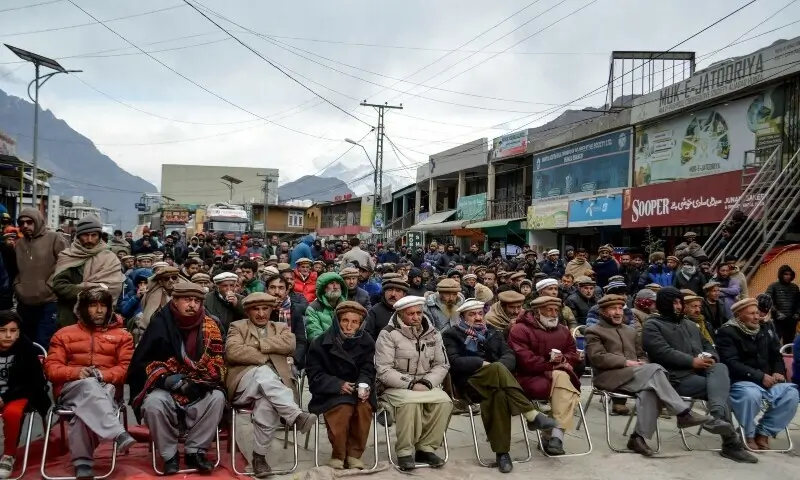Pakistan-China trade along the vital Karakoram Highway (KKH) has come to a halt as protests about acute power shortages in the Aliabad district of Hunza have entered their fourth day. The Hunza Awami Action Committee and All Parties Traders Association organized the protests, which have presented serious logistical and financial difficulties.
Impact of the Power Crisis on Trade and Tourism
The ongoing power crisis has led to devastating consequences for trade and tourism in the region. Key disruptions include:
- Trade Halt: At the CPEC dry port, almost 700 vehicles transporting imports and exports are stuck. The passage of products between China and Pakistan has been hampered by the blockade of commercial trucks at several points in Hunza, underscoring the vulnerability of the trade infrastructure in the area.
- Tourism Decline: Border regions have been unable to get snow removal equipment, which is necessary to maintain road accessibility during the winter. Due to the dangerous condition of the roads, many tourists have been forced to change their plans and go back. As a result, local companies that depend on tourism have experienced significant losses.
The combined impact of these disruptions emphasizes the urgent need to resolve the power crisis to prevent long-term economic repercussions.
Government Response and Protesters’ Demands Amid the Power Crisis
The Gilgit-Baltistan government has suggested installing a new electricity transmission line from Jaglote Guro to central Hunza in an attempt to alleviate the worsening situation. Government representatives claim that this project could result in:
- 1.5 megawatts of electricity during winter
- 4-5 megawatts during summer
Protesters, however, have rejected these pledges, pointing to a track record of broken promises. Even though it is chilly outside, protesters are not wavering in their demands. The demand for tangible solutions has increased as reinforcements from neighboring communities, like Ganish village, have joined the movement.
Background of the Power Crisis in Gilgit-Baltistan
There are underlying reasons for the power outage that is afflicting Hunza and the larger Gilgit-Baltistan region. Commissioner Kamal Khan of Gilgit Division listed the primary causes of the problem:
- Seasonal Water Flow: Because of its reliance on hydropower plants, the area is susceptible to decreased water flow throughout the winter, which drastically reduces its ability to generate electricity.
- Lack of Infrastructure: Communities lack sufficient energy resources during crucial times when there is a lack of a strong power infrastructure, which makes the seasonality of the electricity supply worse.
These structural challenges underscore the persistent neglect of Gilgit-Baltistan’s infrastructure needs, further fueling frustration among residents.
Power Crisis Protest: A Test of Resolve for Authorities and Communities
The demonstrations show a widening gap between the people and the government. Residents demand immediate action while the government frantically tries to come up with alternatives. The crucial CPEC route being blocked has brought attention to the risks, which have an impact on global trade and economic stability.
Local activists and officials stress that the protest is about decades of disregard for Hunza’s developmental demands, not only power outages. The situation is dire because of the ongoing protests and the government’s inability to provide a workable solution.
Conclusion
Life in Hunza has come to a complete halt due to the protracted power crisis, which has had a significant impact on community morale, trade, and tourism. The government is under increasing pressure to offer real solutions as demonstrators hold fast to their position. The electricity issue will continue to strain ties between local communities and authorities if prompt and decisive action is not taken, which could jeopardies the socioeconomic stability of the area.

